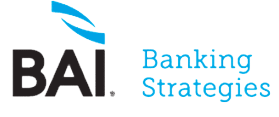It’s been a long, windy road for the FinTech industry. Sam Graziano of Fundation explains the industry is on the cusp of yet more distinct pivots.
BY SAM GRAZIANO
The growth and evolution of “alternative lending” has been a windy road. Like any so-called “disruptive” industry, the eventual successful business model (or business models) evolves through a series of “pivots” (in entrepreneur-speak). It would appear that we are on the cusp of another major pivot for the industry, or, more likely, a few distinct pivots that will be taken by a few distinct groups of businesses, furthering their evolution toward business models that are scalable, profitable and part of the long-term financial services ecosystem. Perhaps, in so doing, clarifying for the outside world whether these companies are technology-enabled financial services companies or technology companies addressing the financial services industry (true “FinTech” companies).
What’s clear is that the industry continues to suffer from an identity crisis, evidenced by the terms used to describe it. It was initially labeled as “Peer to Peer Lending,” at times uses the term “Online Lending,” morphed into “Marketplace Lending,” and now, at least some are using a term I am proud to have coined, “Digitally Enabled Lending” (or its abbreviated version “Digital Lending”), a term more suitable to the broad array of businesses within the industry. The industry terminology never seems to quite catch up to changes in business models or draw enough clear distinctions between the various business models.
For purposes of this article, let’s use my preferred term, “Digitally Enabled Lenders”, (or DELs for short). A DEL is distinctly different than the Alternative Lenders of years ago — the factors, asset-based lenders and equipment financing companies that were the original fabric of the non-bank lending ecosystem. DELs leverage the “Triple As” (aggregation, automation and analytics) to run their lending models. Aggregation, enabled by technology, is the process of a DEL capturing data from third parties in real-time. Automation, enabled by technology, in this context is the process of applying software to running business logic (credit algorithms) or redundant business processes. Analytics, enabled by technology, in this context is the process by which DELs turn that aggregated data into statistical probabilities – probability being the key word. The “Triple As” are the common denominator of the industry, an industry built to underwrite, originate and service small-balance credit to consumers and small businesses more efficiently than the traditional bank models ever have. Perhaps after another credit cycle DELs will prove to have developed better risk models as well.
Undoubtedly this tech-enabled method of lending is and will be a driving force in the evolution of small-balance lending. Yet, the “Triple As” don’t equal triple the profits. As it turns out, customers don’t just show up at your doorstep asking for the “tech-enabled loan.” And, more recently, the capital markets are suggesting it might not flood every prospective industry participant with cash forever. Meanwhile, the banks still have two major competitive advantages: 1) their low cost and stable funding, and 2) a structural advantage to the customer through the deposit relationship.
Small-balance lending, technology or not, is a tough business. Few, if any, DELs have delivered the level of profits that the private and public markets will require to justify the valuations they still command. As high profits still elude the DELs, they are starting to pivot, or, at least signal a pivot is in the making. The bank dis-intermediators are talking about bank partnerships, the brand builders are talking about providing platform solutions and the “marketplaces” are moving toward leveraging permanent capital vehicles. None of which is a criticism of any kind (I run a DEL after all!). If only Blockbuster had pivoted faster when Netflix launched their disruptive concept of mailing people their DVDs.
The nature of the pivots differs based on product line. To date, DELs largely exist in four markets, student lending, unsecured consumer lending, nonconforming mortgage lending and small business lending. Some DELs are pursuing new product lines to sustain their growth rates and capture more of the customer’s wallet. Others are pursuing bank partnerships. A select few are intent on becoming software companies (not lending at all), enabling digital lending for the banks and other non tech-enabled lenders. And, lastly, others who have already proven their ability to drive strong unit economics by marketing directly to a consumer (or a business) are intent on becoming a lasting brand within the U.S. financial services ecosystem.
What is rather clear is that the players in the DEL market are choosing to pivot and pursue pathways that will result in profitable and sustainable business models. My wager is that the result will bring clarity to the DEL identity crisis through the creation of multiple new business models and multiple new identities.

DIGITALLY ENABLED LENDERS
Sam Graziano is the chief executive officer of Fundation, a New York City-based small business direct lender and solutions provider that utilizes a sophisticated software platform to streamline the lending process. Graziano is a highly experienced financial services professional and entrepreneur. Graziano graduated from Bucknell University with honors with a degree in Computer Science & Engineering.
More News
Visa boasts of fintech Fast Track success
May 14, 2020
New York City Credit Program Aims to Help Female Entrepreneurs
November 14, 2019
Import/Export SMBs Introduced to Fintech Lending Options
August 7, 2019
Online Loans You Can Take To The Bank
April 23, 2019
Case study: Citizens Bank – fintech friendly
February 19, 2019
2018 Best of FinXTech Awards Finalists Announced
March 29, 2018
Citizens Digitizes SMB Lending Process With Fundation
November 6, 2017
Park Bank Announces Expansion of Small Business Lending Efforts
November 2, 2017
Defining, Adopting and Executing on Fintech
September 5, 2017
Fundation CEO Talks Partnership Strategy
August 4, 2017
Fundation works with, not in place of, banks
April 3, 2017
Fundation Secures Credit Facility from MidCap Financial
March 21, 2017
Where the money is: A small business lending gap
March 3, 2017
Q&A Break with Sam Graziano, CEO of Fundation
January 18, 2017
Fintech Ideas Festival Rapid Fire Emerging Tech Panel
January 17, 2017
Citizens Bank Next To Take The Leap With Alt-Lender
December 21, 2016
Regions Eyes Small Business Loans in Latest Tech Deal
September 22, 2016
Is The Future Of Alt-Lending Playing Well With Others?
August 30, 2016
Best Alternative Small Business Loans 2016
May 27, 2016
Frenemies In the Marketplace
April 29, 2016
Bigger Bang In Small Biz
April 1, 2016
How To Get A Small Business Loan (Webinar)
March 29, 2016
Fundation Expands Small Business Lending
March 4, 2016
Top 25 Financial Blogs for Small Businesses – 2016
February 22, 2016
CEO Sam Graziano on MSNBC’s Your Business
February 18, 2016
Bank Branches Are Still Good for at Least One Thing
February 17, 2016
Fundation Named Finalist In 2016 Stevie® Awards
February 12, 2016
A “Meaningful” Platform-Bank Partnership?
January 6, 2016
Late on a Loan Payment? How To Do Damage Control
October 21, 2015
Regions Inks Unique Deal to Tap Booming Fintech Industry
October 13, 2015
Best Alternative Small Business Loans – 2015
October 6, 2015
Fintech strikes again; Regions partners with start-up
October 5, 2015
Investing in Alternative Lending?
May 1, 2015















